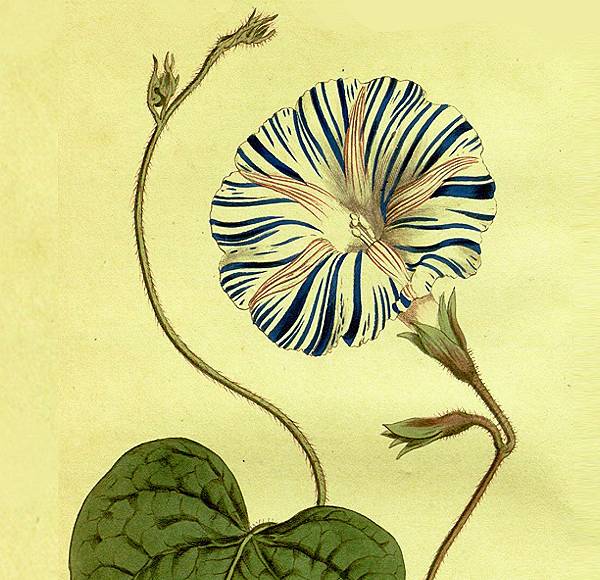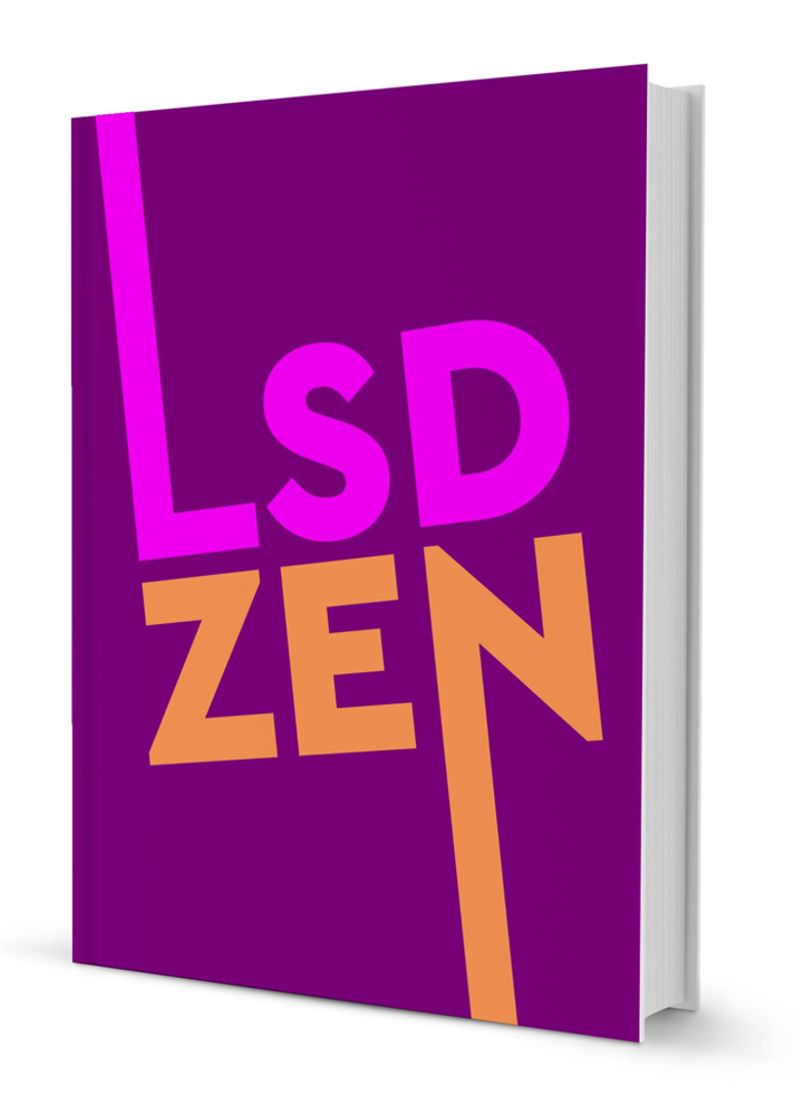Uterine Stimulant Effect of Extracts of Morning Glory Seeds
By Various Authors, 1964

The Castalia Foundation republishes the following article purely to preserve the history of the magazine, and to satisfy the interest of the modern reader. The Psychedelic Review does not endorse the abuse of animals for the purposes of 'science' by 'scientists'. As Gandalf reminds us in Tolkien's Lord of the Rings, "He that breaks a thing to find out what it is has left the path of wisdom."
Modern readers may find the following article upsetting as, in part, it describes the bludgeoning, murder and mutilation of 'laboratory' animals. The responsible 'scientists' are: Ara H. Der Marderosian; Anthony M. Guarino; John J. De Feo; and Heber W. Youngken, Jr. (Departments of Pharmacognosy and Pharmacology, College of Pharmacy, University of Rhode Island). This study was supported [ironically] by funds from Grant MH-06511, National Institute of Mental Health Bethesda, Md.
The history, description and use of seeds of certain members of the Convolvulaceae for divinatory purposes has been well documented in the literature by Schultes and Wasson.
[1,2] These reports have prompted several investigations, and recently Hofmann et al.
[3,4,5] have isolated and identified the active principles as certain ergot-type alkaloids. These are d-lysergic acid amide (ergine), d-isoLysergic acid amide (isoergine), chanoclavine, elymoclavine and ergometrine.
Further work by Taber et el.
[6,7,8] has established that the alkaloids are in the microbially sterile embryo. They have also reported that the leaf and stem, but not the root, of Rivea corymbosa also contained small amounts of alkaloids and that these principles are present in many varieties of morning glories. However, some of the seeds are listed only by horticultural name, and some are synonymous with others in his table of plants studied.
Our investigations
[9] indicate that the main psychotomimetic principles are limited to varieties or horticultural forms of Ipomoea violacea L. This would seem to make sense because, of the many different species of Ipomoea available to the Mexican natives in their local flora, only I pomoea violacea L. is used in their religious ceremonies for divinatory purposes.
The following is a list of morning glories we have studied
botanically and chemically:
Gruger, who is presently studying the biogenesis of ergoline derivatives in Ipomoea
[10,11] has also reported the occurrence of these indole alkaloids in Ipomoea species.
[12] He has stated that, for the first time, ergoline derivatives have been isolated from Ipotnoea rubro-caerulea Hook.
We believe that this species name is synonymous with Ipomoea violacea L. and that the plants may be identical. The name is listed as a synonym under Ipomoea violacea by House and Wasson.
[9] However, Groger reported the presence of agroclavine and elymoclavine in Ipomoea coccinea, the first case of the presence of these ergot type alkaloids in this species.
The presence of ergonovinet ("Ergonovine" is synonymous with "ergometrine" in Hofmann's designation) in Ipomoea species has been reported by Taber,
[7] Groger,
[12] and Hofmann.
[13] Taber has detected it in 'Pearly Gates' and Rivea corymbosa, while Hofmann found it only in Ipomoea violacea.
Shortly after the publication of these reports in the scientific literature, there arose in the United States a chewing-craze for morning glory seeds ('Heavenly Blue,' Pearly Gates,' Flying Saucers') for purposes of eliciting hallucinatory responses similar to LSD. Many articles followed in lay journals in the wake of these practices, further extending their usage. Many seed companies even reported depletion of their stocks of morning glory seeds.
In view of these developments and the fact that these readily available seeds contain ergonovine in quantities of around 0.005%,
[19] we became interested in testing the most popular varieties ('Heavenly Blue' and 'Pearly Gates') for possible oxytocic properties.
Tests by Savage et al.
[12] have shown that low doses (20 to 50 seeds of 'Heavenly Blue' and 'Pearly Gates') are capable of inducing "beginning imagery" and that higher doses (100 to 500 seeds) show distinct LSD-like effects. They produce spatial distortions and visual and auditory hallucinations as well as other effects characteristic of LSD.
Although we have found that the Mexican Ipomoea violacea seeds (seeds which Hofmann reports his 0.005% figure for ergonovine) weigh slightly more than half their horticultural forms per 100 seeds, the above figures, even at half-value, fall well into the human dosage range for ergonovine. This range is 0.2 to 0.5 mg of ergonovine as an oxytocic.
[16]
Since the isolated rat uterus has been used for the bioassy of ergonovine, we decided to use this tissue for our tests. The uterus was prepared in the following manner:
Female rats were killed by a blow to the head and the uterus rapidly removed. One horn was used per experiment, and about 14 horns were used throughout the experiments. To obtain isotonic recordings a uterine horn was mounted vertically in a standard tissue bath (70 ml).
Aerated de Jalon's solutionle at 37.5 degrees celsius was used to obtain a quiescent tissue. The movement of the uterus were recorded on a slow moving kymograph. After running the smoked drum to obtain a control tracing, the aqueous extracts were added.
Preliminary experiments with crude aqueous extracts of ground seeds proved inconclusive because of the coating effect of the mucilaginous preparation on the isolated uterus. A slight oxytocic effect was detected, but it was not notable. It was then decided that a crude total extract of the indole alkaloids from the seeds be used. This was prepared by Groger's method
[12] and involves the following steps:
The ground seeds (1 gram of seeds was used in each case) were defatted with petroleum ether. This was followed by extraction with an acetone-tartaric acid solution. The acetone was evaporated off on a water bath, and the resultant tartaric acid solution was neutralized. This was finally extracted with methylene chloride to obtain the alkaloids. This was evaporated in vacuo and the extract taken up in 2 ml of water; aliquots were taken and added to the bath during normal rhythmic contractions.
Several aqueous dilutions of each extract were used in the experiments. It was found that a 025 ml aliquot of the original 2 ml was capable of eliciting a maximal contractive response. This was approximately equivalent to a response effected by 0.1 ml of a 1 ml solution containing 02 mg of Ergonovine maleate (Ergonovine maleate, 02 mg/1 ml, ampoule, Lilly Co., Inc., Indianapolis, Indiana). After a few minutes, an additional 0.5 ml was added and a return to maximal contractions observed. This procedure was repeated with an extract of Tadoh negro' (Mexican Ipomoea violacea seeds), 'Heavenly Blue' and 'Pearly Gates' (blue and white flowered varieties of Ipomoea violacea, respectively).
A spectrophotometric chemical analysis by the Michelon and Kelleher" modification of the Van Urk's assay was used to analyze the extracts.
Since certain ergot-type alkaloids found in Ipomoea seeds are known to be oxytocic, due in part to their uterine-stimulant action, the authors suggest that a potential danger exists if excessive amounts are ingested. In addition, Savage
[14] has mentioned in his studies on humans the possibility of ergot poisoning with high doses of Ipcnnoea
seeds.
Hofmann reports 0.06% total with his collection of 'Badoh negro' (I pomoea violacea) seeds. Our experience has shown that this total percentage varies from seed batch to seed batch. In addition, the thoroughness of extraction by various methods also varies.
FOOTNOTES
- Schultes, R. E. A Contribution to Our Knowledge of Rivea corymbosa. The Narcotic Ololiuqui of the Aztecs. Botanical Museum of Harvard University, Cambridge, Mass., 1941.
- Wasson, R. G. The hallucinogenic fungi of Mexico: An inquiry into the origins of the religious idea among primitive peoples. Botanical Museum Leaflets, Harvard University, 19: 137-162, 1961. (Reprinted in The Psychedelic Review 1: 27-42, June 1963.
- Hofmann, A. and Tscherter, A. Isolierung von Lysergsaure-Alkaloiden aus der mexikanischen Zauberdroge Ololiuqui (Rivea corymbosa (L.) Hall. f.) Experientia. /6: 414, 1960.
- Hofmann, A. and Cerletti, A. Die Wirkstoffe der dritten aztekischen Zauberdroge. Deut. Med. Wochschr. 86: 885-888, 1961.
- Hofmann, A. Die Wirkstoffe der mexikanischen Zauberdroge "Ololiuqui". Planta Med. 9 : 354-367, 1961.
- Taber, W. A., and Heacock, R. A. Location of ergot alkaloids and fungi in the seed of Rivea corymbosa (L.) Hall f., "Ololiuqui". Can J. Microbiol. 8: 137-143, 1962.
322 & Taber, W. A., Heacock, R. A., and Mahon, M. E. Ergot-type alkaloids in vegetative tissue of Rivea corymbosa (L.) Hall f. Phytochem. 2:99, 1963.
- Der Marderosian, A. H., Haulm, R., and Youngken, Jr., H. W. Preliminary studies of the comparative morphology and certain induks of Iponsoea seeds. Economic Botany 18: 1964. (In press).
- Groger, D. Ober die Umwandlung von Elymoclavin in Ipomoea-Blittern. Planta Medica 4: 444-449,1963.
- Groger, D., Mothes, K., Floss, H. G., and Weygand, F. Zur Biogenese von Ergolin-Derivaten in 1pomoea rubro-caeruka Hook. Zeitschrift fur Naturforschung 188: 1122, 1963.
- Groger, D. Ober das Vorkommen von Ergolinderivaten in Itomata-Arteo. Flora 153: 373-382, 1963.
- Hofmann, A. The active principles of the seeds of Rivea corymbosa and Itomota violacca. Botanical Museum Leaflets, Harvard University 20: 194-212, 1963. (Reprinted in The Psychedelic Review 1, Winter, 1963-64).
- Savage, C., Harman, W. W., and Fadiman J. International Foundation for Advanced Study, Menlo Park, California. Personal communication.
- Merck Index, 7th edition, p. 409, 1960.
- de Jalon, G., Bayo, and de Jalon. Farmacoterap. Act. 2: 313, 1945.
- Michelon, L, and Kelleher W. The spectrophotometric determination of ergot alkaloids. A modified procedure employing paradimethylaminobenzaldehyde. Lloydia 26: 192-201, 1963.
323
Download Our Free Psychedelic Healing Books







